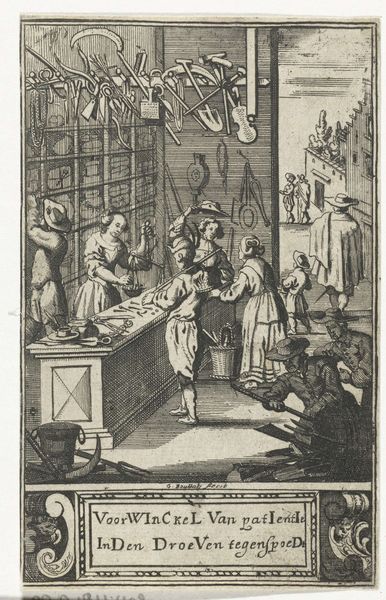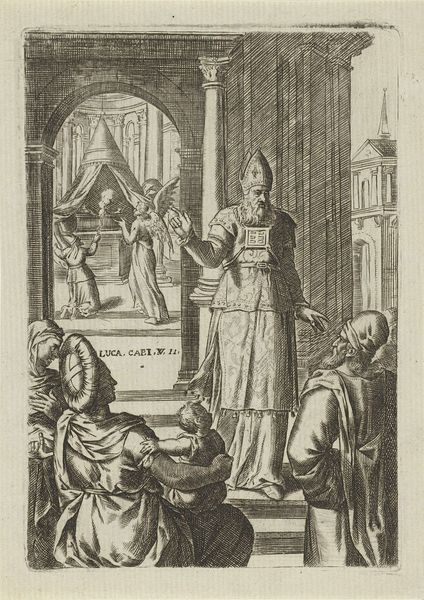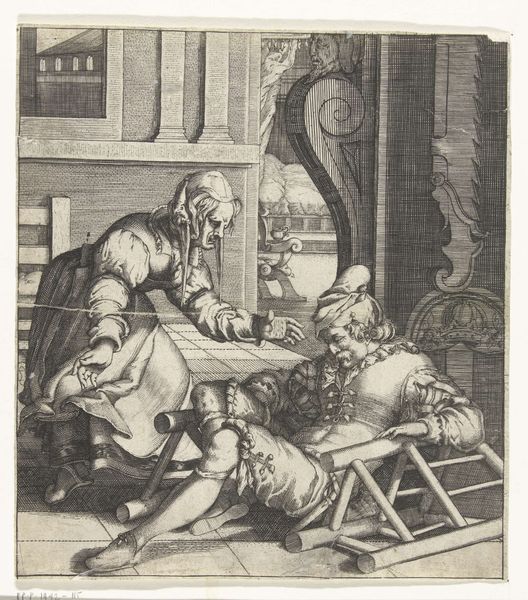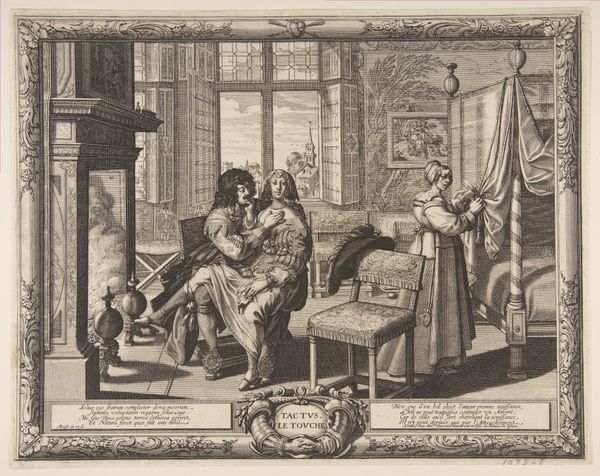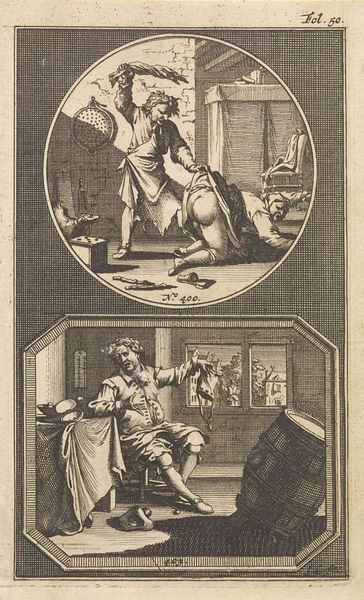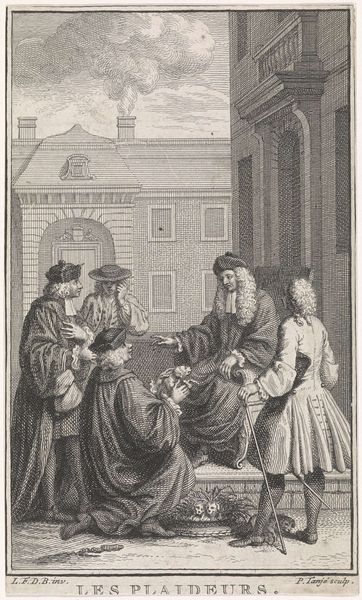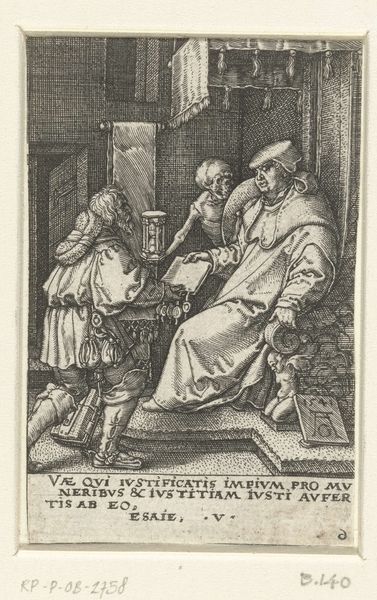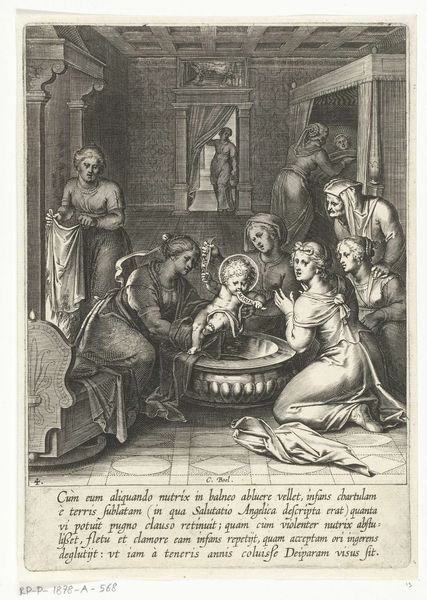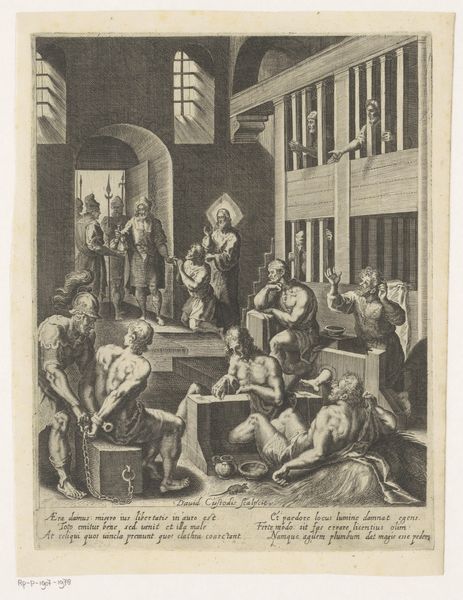
print, engraving
#
narrative-art
#
baroque
# print
#
old engraving style
#
history-painting
#
engraving
Dimensions: height 209 mm, width 160 mm
Copyright: Rijks Museum: Open Domain
Curator: As you can see, we are standing before “Christ in the House of Martha and Mary,” an engraving created sometime between 1624 and 1652, attributed to Crispijn van den Queborn, and it currently resides here in the Rijksmuseum. Editor: It’s remarkably detailed for an engraving. The mood is domestic, but there’s a clear tension in the composition. I'm immediately drawn to the figure gesturing in what appears to be exasperation—perhaps Martha? Curator: Indeed, and that tension speaks volumes about the domestic role of women, doesn’t it? The inscription translates to something along the lines of, "Martha, you are anxious and troubled about many things, but one thing is necessary. Mary has chosen the good portion, which will not be taken away from her," referencing Luke 10:41-42. Editor: Ah, that Biblical passage sets the scene. Martha is clearly in distress about the labor required to host Christ, while Mary sits and listens. The engraving captures that contrast, right down to the pots and pans meticulously rendered in the background, versus the stillness of Mary with her book. Curator: Exactly! These images were not simply illustrations. The division of labor, spiritual focus, the very definition of "womanly virtue"— all were contested ideals during the period that this work reflects. Queborn cleverly encapsulates those anxieties and aspirations using these well-worn symbolic shorthand and archetypes. Editor: Looking at this image now, I read it not so much as a theological declaration but as a comment on labor disparity and recognition. This engraving has become less about literal interpretation and more about timeless imbalance. I wonder what future viewers will project onto this scene as social roles continue to shift. Curator: And isn't that the ongoing power of symbolic art, to serve as this continuing reflection? It lets viewers confront their cultural anxieties anew across the centuries. Thank you for shining new light on that meaning, it seems to me, too, to have many more years of relevance!
Comments
No comments
Be the first to comment and join the conversation on the ultimate creative platform.

